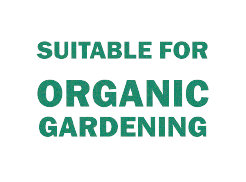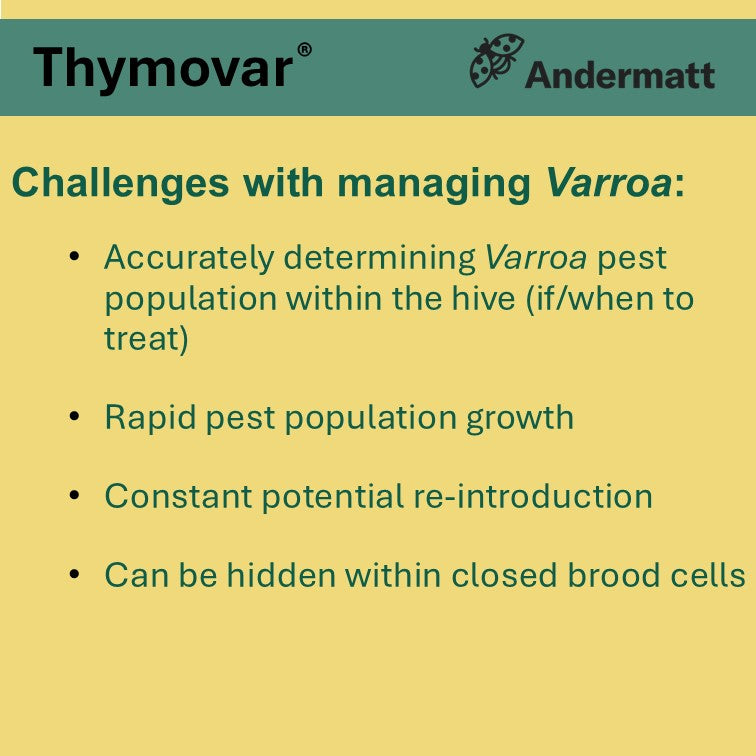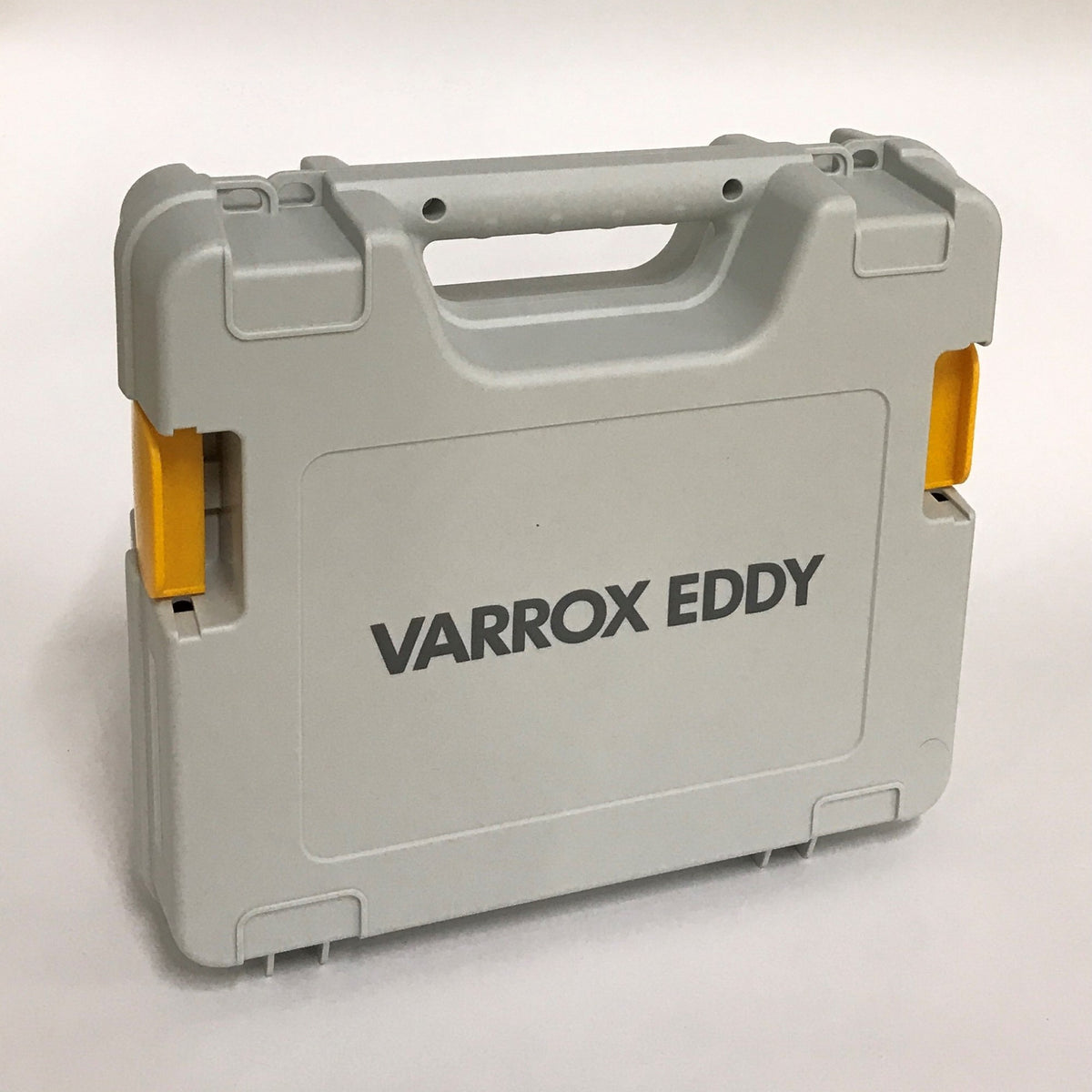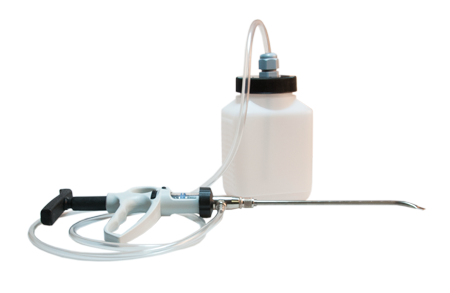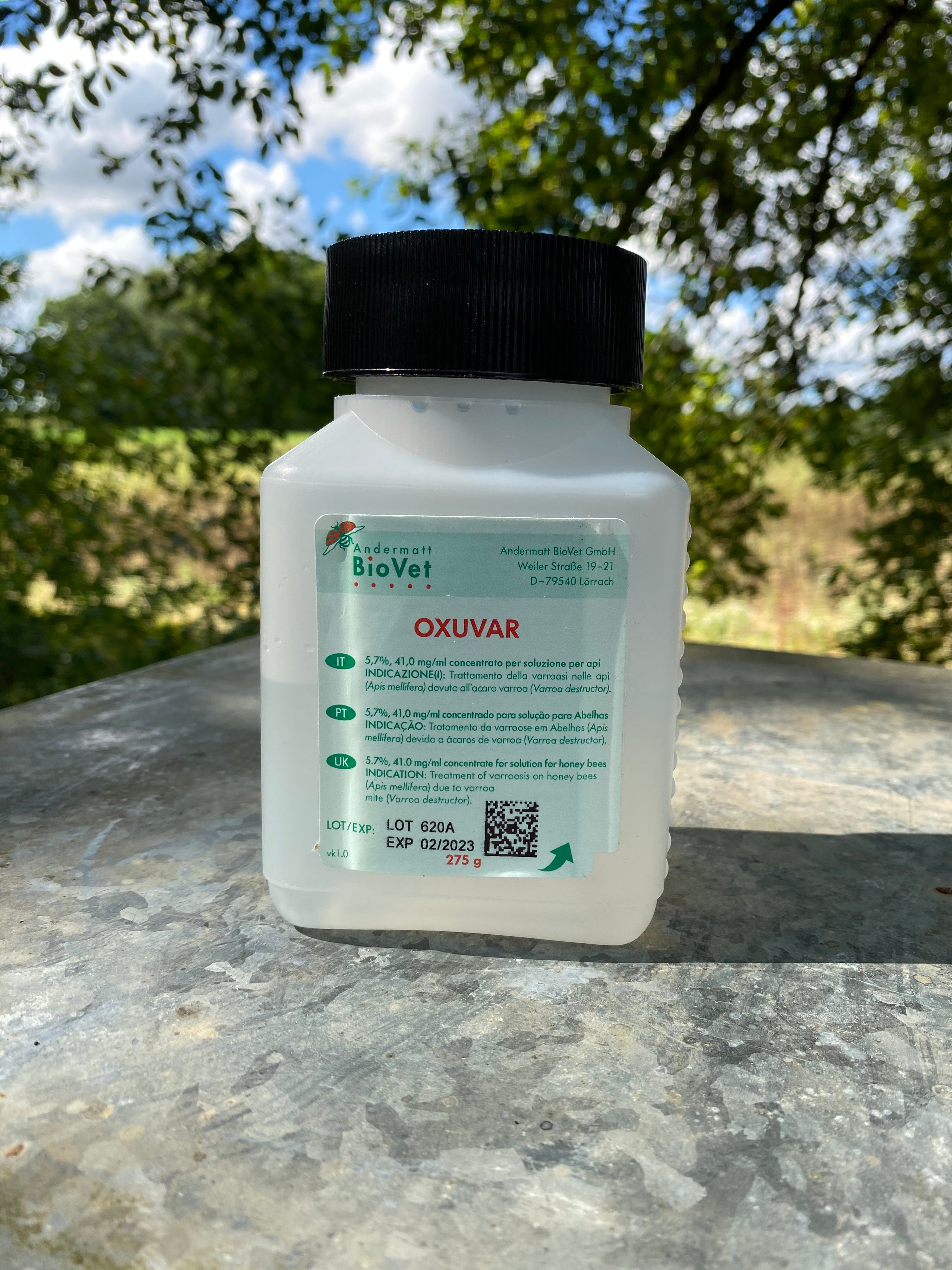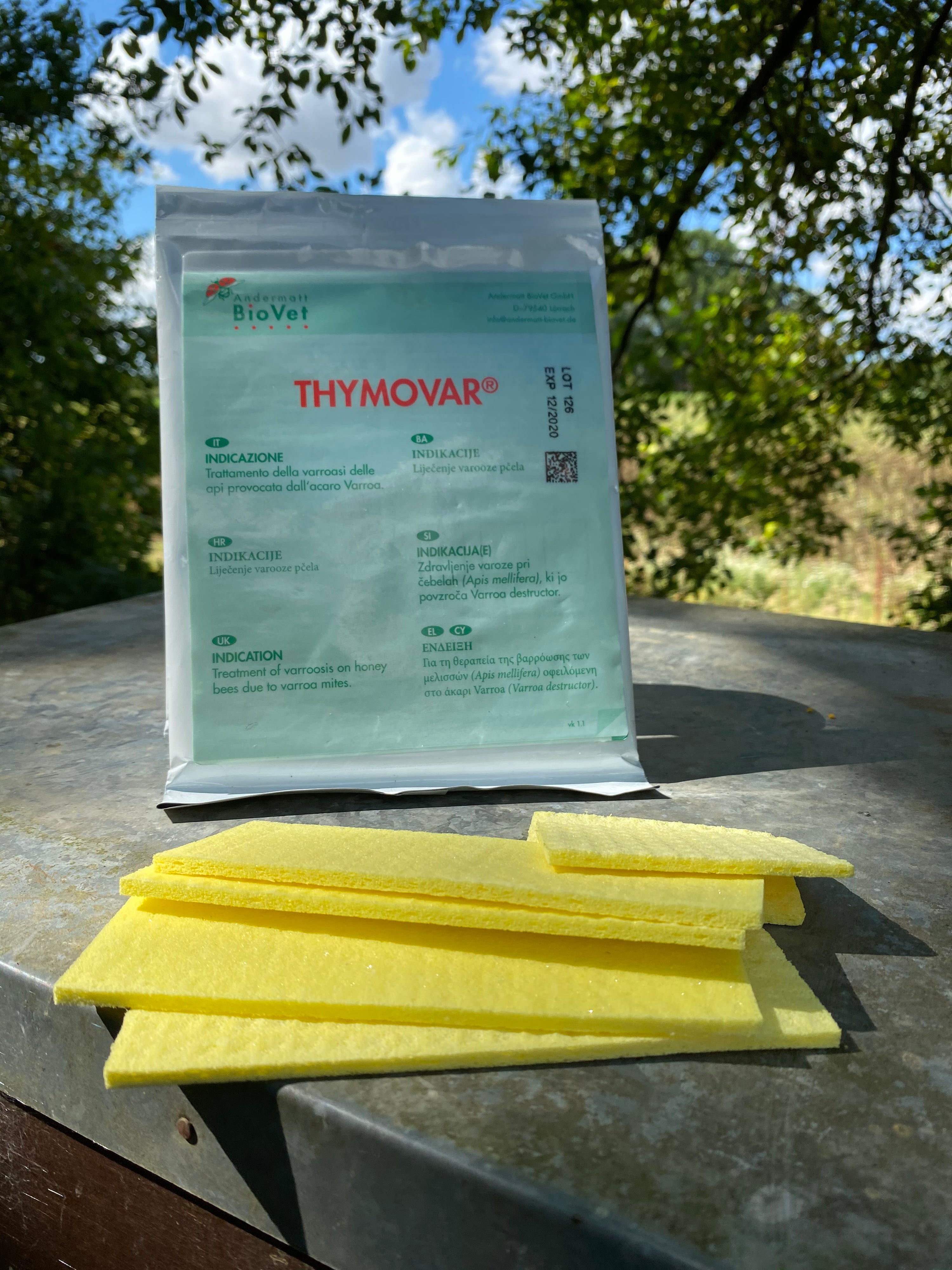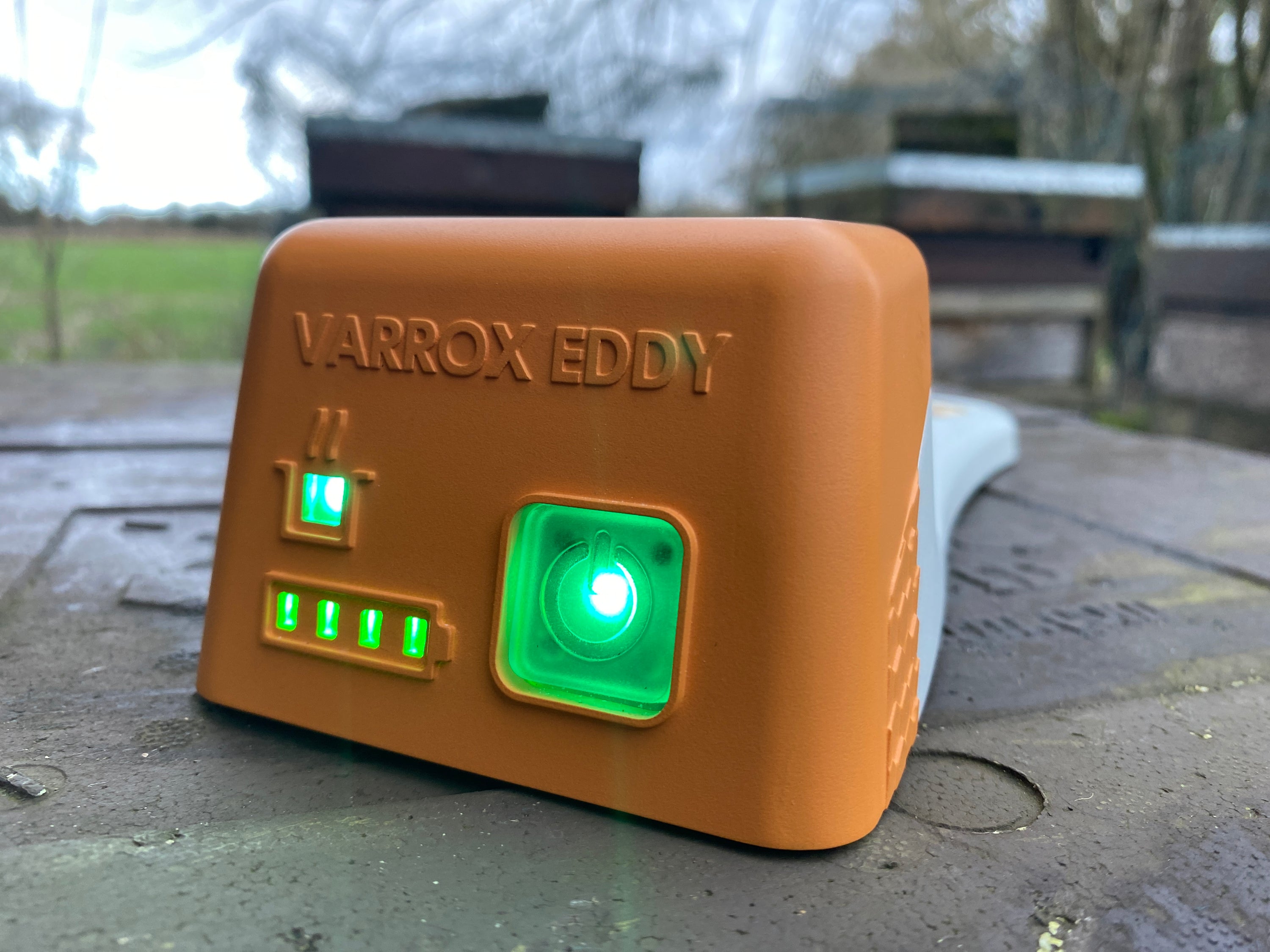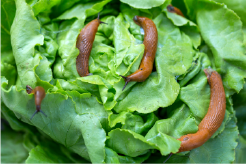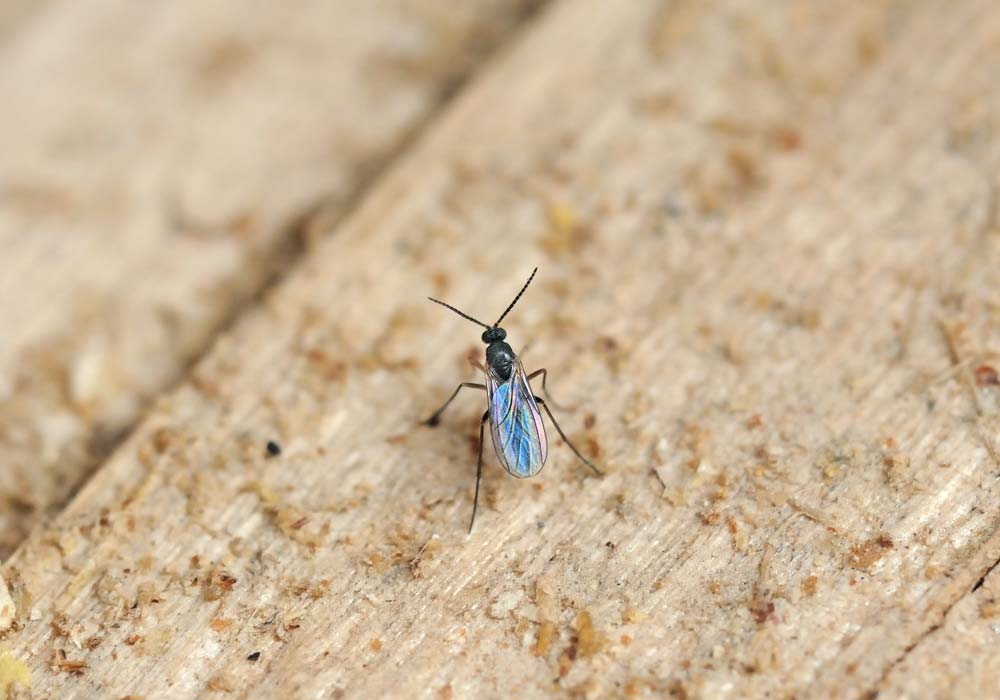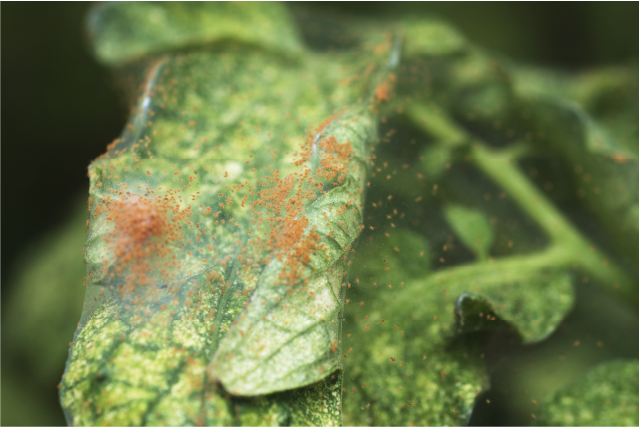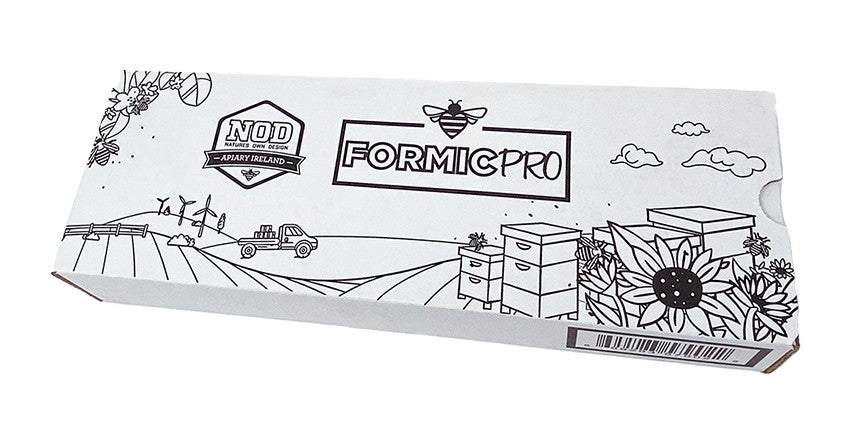
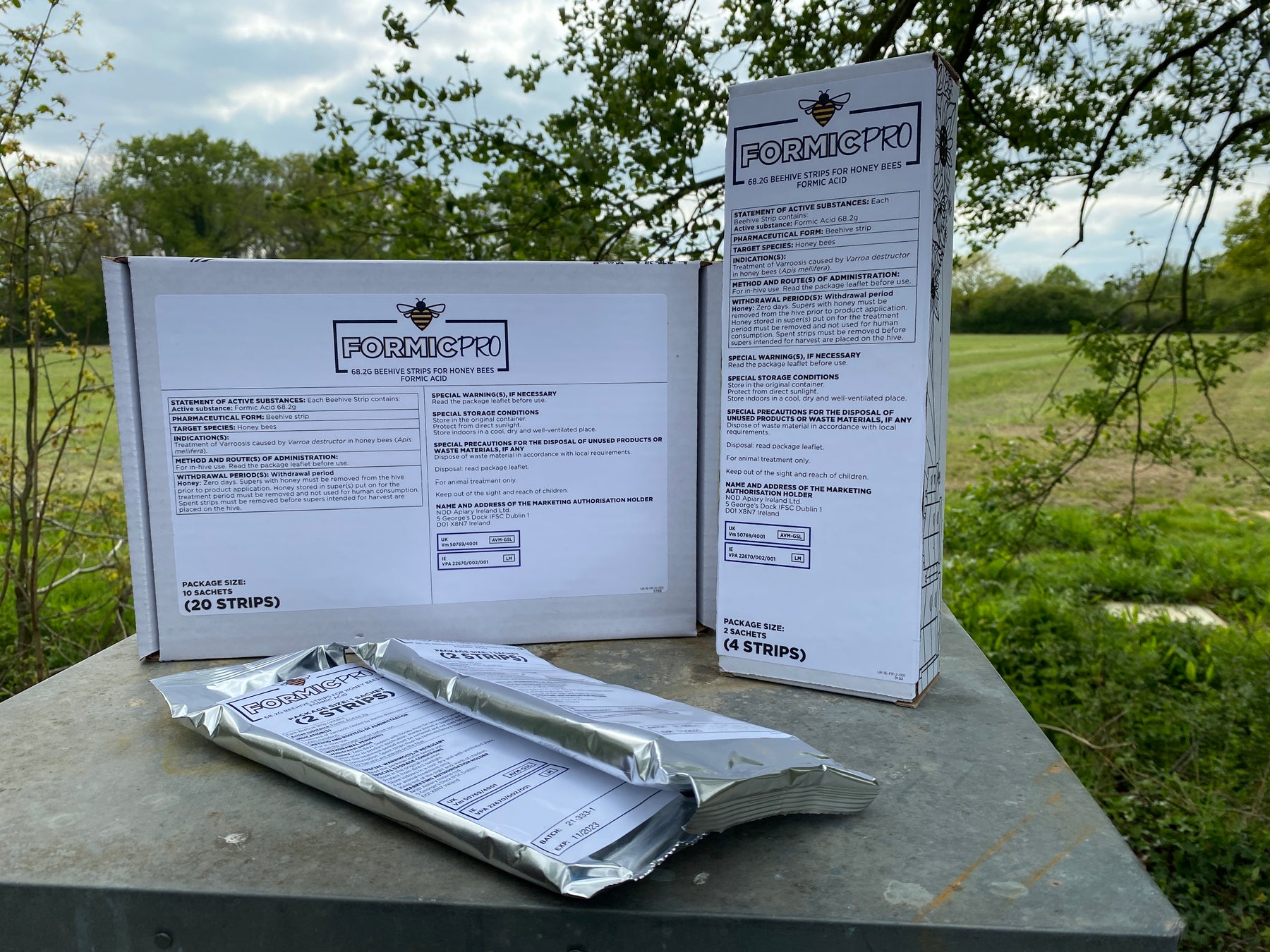
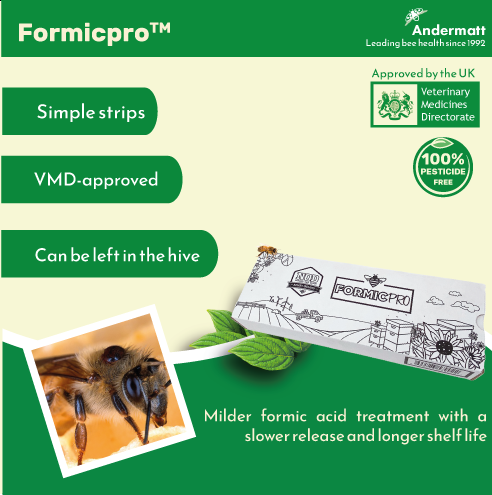
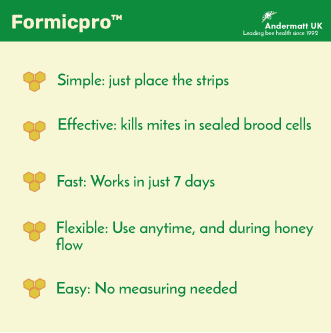
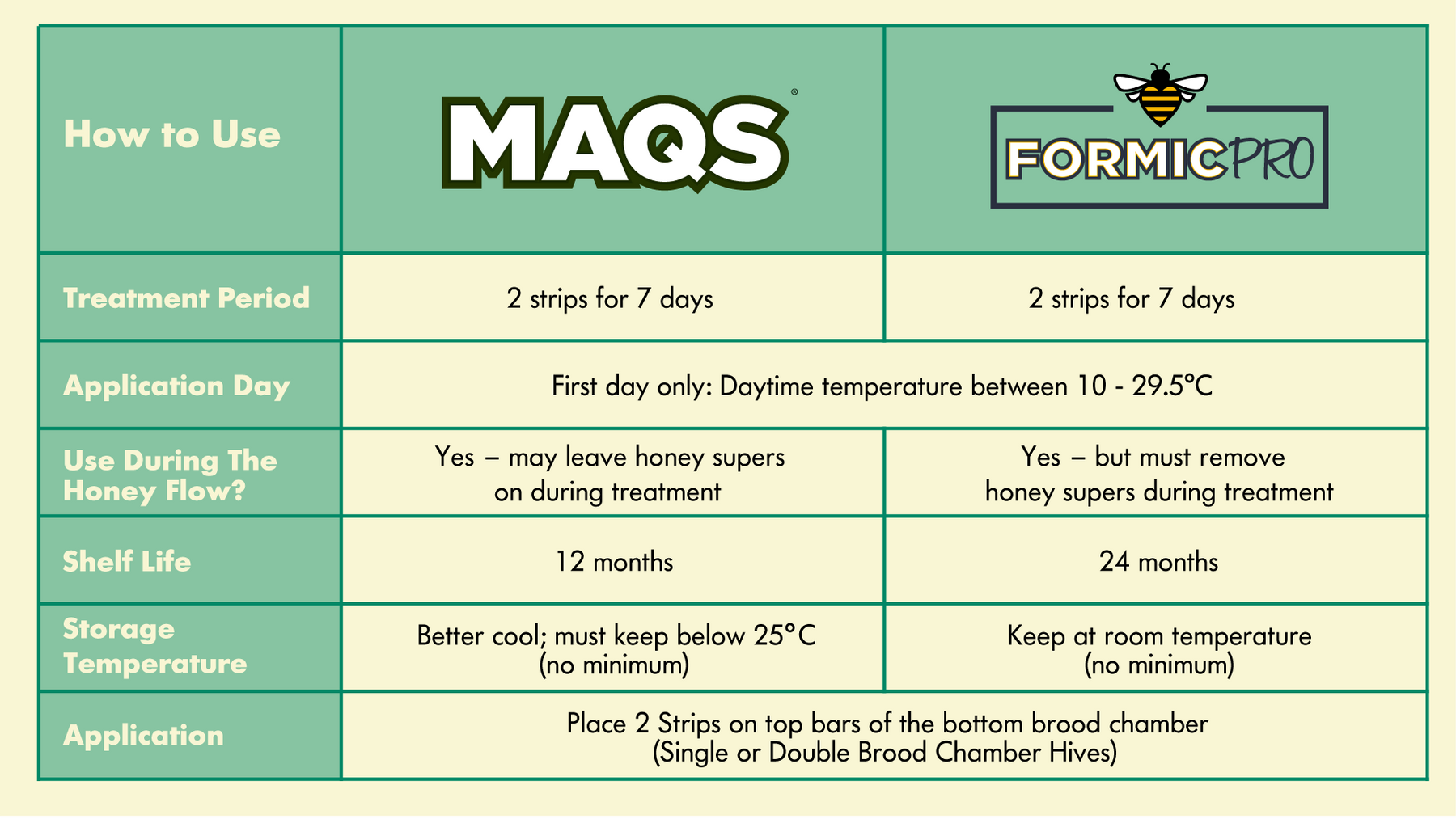

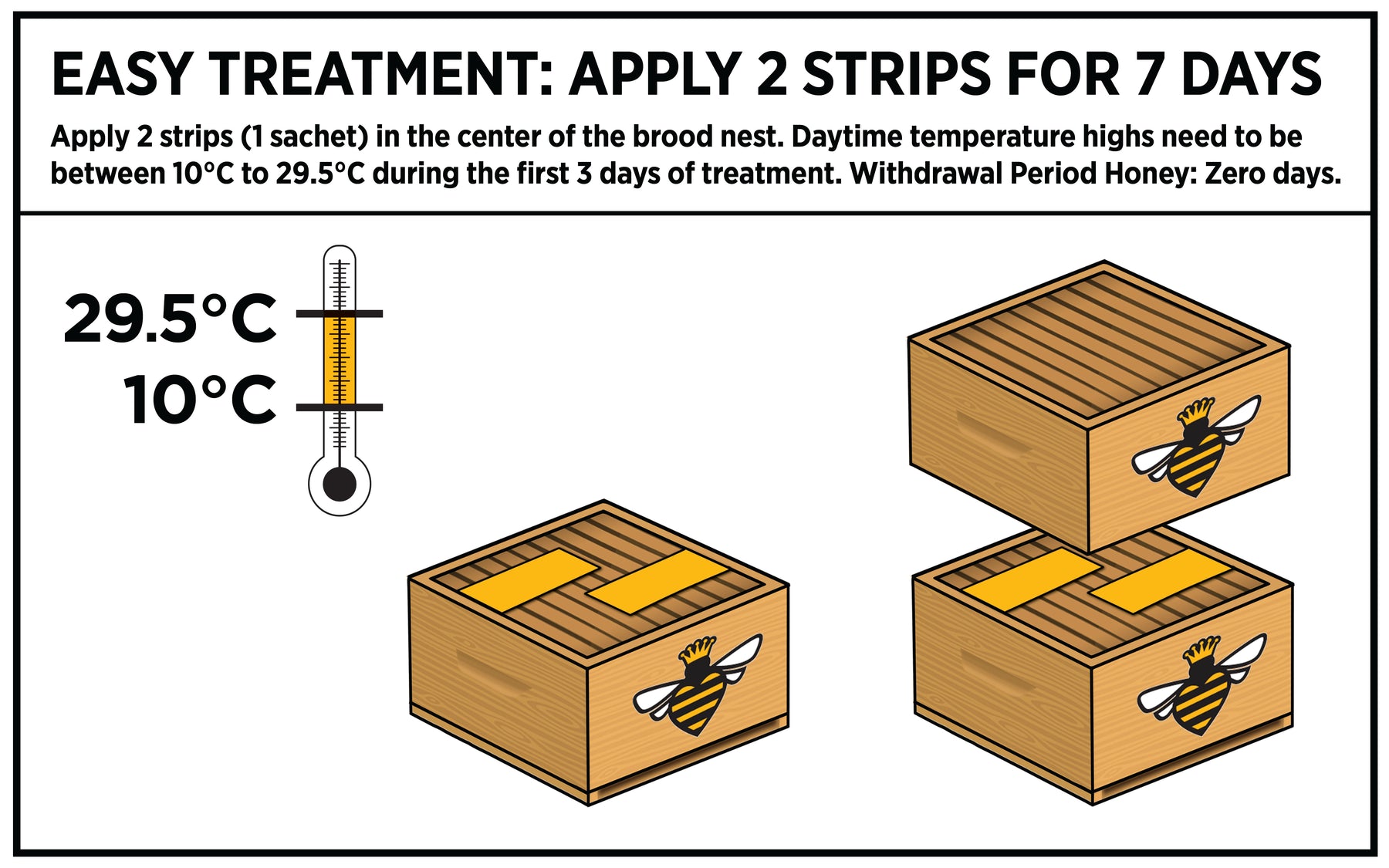
Andermatt Home & Garden
Formicpro™
Free shipping on orders £30 and over
The active ingredient in Formicpro™ mite treatment strips is formic acid. Each Formicpro™ mite strip formulation concentrates the formic acid to be an effective toxic bio-pesticide. Formicpro™ mite strips contain 68.2g of formic acid and brown semi-rigid to soft gel covered in a biodegradable laminated paper. The paper wrap acts as a wick to control the release of the formic acid vapours into the hive.
Formic acid is commonly found in many plants and is a natural component of honey. When placed in your hive Formicpro™ mite strips release formic acid vapours which are toxic to the varroa mite. Formicpro™ kills both male and female varroa mites under the brood cap where they reproduce and any mites existing on the bees. Formicpro™ 2 dose strips can be used throughout the active season with zero withdrawal period. Honey supers for consumption must be removed for the duration of the treatment.
When is best to use?

To protect your colony going into the spring/summer honey flow, use Formicpro™ 2 dose whilst the colony expands in size in the spring. To protect your colony going into the winter and protect the bees that will make up the winter cluster, use Formicpro™ varroa mite treatment as the colony begins to reduce in number in late summer/autumn.
Formicpro™ can be used throughout the active season but is best applied to the hive when the outdoor temperature range is between 10-29.5°C. Formicpro™ will have the most impact on the varroa in your hive when the outdoor temperature range is between 15-25°C.
The problem: The Varroa mite (Varroa destructor) is the biggest pest problem that the modern bee keeper faces in the UK today. The Varroa mite feeds primarily on the fat body tissue of the honey bee larvae and the adult bee, affecting the growth of the individual bee and spreading numerous diseases throughout the colony. If there is a significant infestation of Varroa mites in your hive, this will have a considerable impact on the overall condition of your colony. The colony will produce less honey, be more susceptible to disease and will be less likely to survive the winter. In the UK, the Varroa problem is best handled with an integrated pest management strategy (IPM). Formicpro™ which has the active ingredient formic acid is one of the most effective ways to control the Varroa population in your hive and can be used as part of a successful IPM strategy
The product: The active ingredient in Formicpro™ varroa mite treatment is formic acid. The Formicpro™ mite strip formulation concentrates the formic acid to be an effective toxic bio-pesticide. Formicpro™- mite strips contain 68.2g of formic acid and brown semi-rigid to soft gel covered in a biodegradable laminated paper. The paper wrap acts as a wick to control the release of the formic acid vapours into the hive. Formic acid is commonly found in many plants and is a natural component of honey. When placed in your hive Formicpro™ mite strips release formic acid vapours which are toxic to the varroa mite. Formicpro™ kills both male and female varroa mites under the brood cap where they reproduce and any mites existing on the bees.
- VMD registered treatment for use in the UK
- Easy to apply, simply lay strips within the hive
- Can be left in the hive or added to the compost
Preparation
Formicpro™ can be used on the hive at any time in the active season when the outdoor temperature range is between 10-29.5°C on the day of application. Formicpro™ will have the most impact on the varroa in your hive when the outdoor temperature range is between 15-25°C. If temperatures are above 29.5°C during the first 3 days, there will be a greater risk of bee, brood, and queen loss.
- Inspect any colonies that are to be treated ideally 3 days before the beginning of treatment in order minimise disturbance of the colony. The colony should be queen right and strong with a minimum of around 10,000 bees or 6-8 frames of bees in a National hive.
- Ensure there are enough food stores in the brood chamber of the colony for the duration of the treatment (7 days). If the colony needs to be fed, feed before applying the treatment to the hive, not during treatment.
- Any supers with honey on the hive should be removed prior to product application. Honey stored in any supers put on for the treatment period must be removed and are not used for human consumption. Spent strips must be removed before supers intended for harvest are placed on the hive. If the colony is expanding and needs space, empty supers or brood chambers can be used to give the colony space.
Application
- Remove Formicpro™ treatment from the outer foil packaging using acid resistant gloves. Do not remove the strips from the paper wick, this controls the release of the vapours throughout the treatment.
When varroa thresholds are met in your colony, Formicpro™ mite strips should be applied in the following way: Place both strips across the brood nest for 7 days.
- Position strips on top of the brood frames with a gap of about 5cm between each strip and 10cm between the strips and the end of the brood box.
- Ventilation and space in the hive is key for the duration of the treatment. Adding an extra super or brood box and removing the entrance block from the hive will give the colony the correct amount of ventilation. The hive entrance must be fully open across the box for the duration of treatment. This will reduce the risk of excessive damage to the colony. Any hives with open mesh floors should have the tray inserted to reduce rapid vapour loss. Bees are not built to move air up through a screen so open mesh floors should not be considered as additional ventilation. Queen excluders can be left on the hive during treatment. Replace the super or second brood box on the hive and set it back by a few centimetres for an extra temporary entrance if the main entrance is reduced and cannot be fully opened. You can also insert wedges at the bottom of the hive to create an extra temporary entrance at the bottom.
Use Formicpro™ for bees as part of an integrated pest management (IPM) program. Regularly measuring varroa mite numbers throughout the active season is an important metric to know about your colonies. This will tell you when the varroa threshold in your colony is met and action needs to be taken.
Do not destroy any queen cells that may be observed prior to or post treatment. Supersedure, even if thought to be set in motion by Formicpro™ mite treatment, is a natural process and should be allowed to proceed for the health of the colony. Verify the colony is queen-right one month after treatment. Mother and daughter queens present post treatment are not uncommon.
| Store |
|
|
| Shelf life | Formic Pro has a 2-year shelf life from date of manufacture. Always check the label on the box for the exact expiry date of each batch. Use before expiry date. | |
| Use | Formic Pro can be used throughout the active season and is best applied to the hive when the outdoor temperature range is between 15°C-25°C. | |
| Important information | Do not use when daytime temperatures are outside the range of 10–29.5°C on the day of application. Do not use for treatment of colonies with less than 10,000 bees. A smaller colony might not be able to provide sufficient air flow. | |
| Active substance and content | 68.2g of formic acid per strip which is the active ingredient. The strips are a semi-rigid to soft gel covered in a biodegradable laminated paper which maintains form. | |
| Product size | Box size: 310mm x 52mm x 105mm. Cardboard box containing a plastic liner (with resealable tape) with 2 sachets (4 strips) |
You may also like

Simple strips
Easy to apply, simply lay in the hive and can leave there
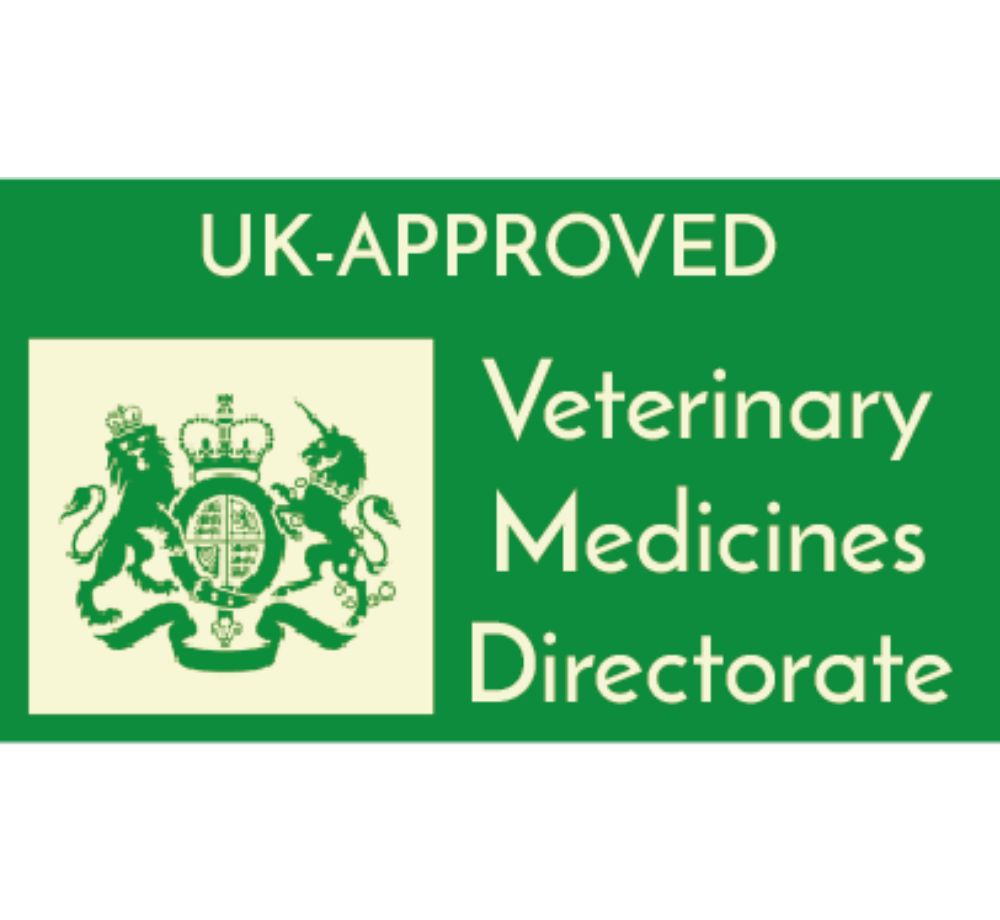
VMD-approved
A VMD-registered treatment for use in the UK.
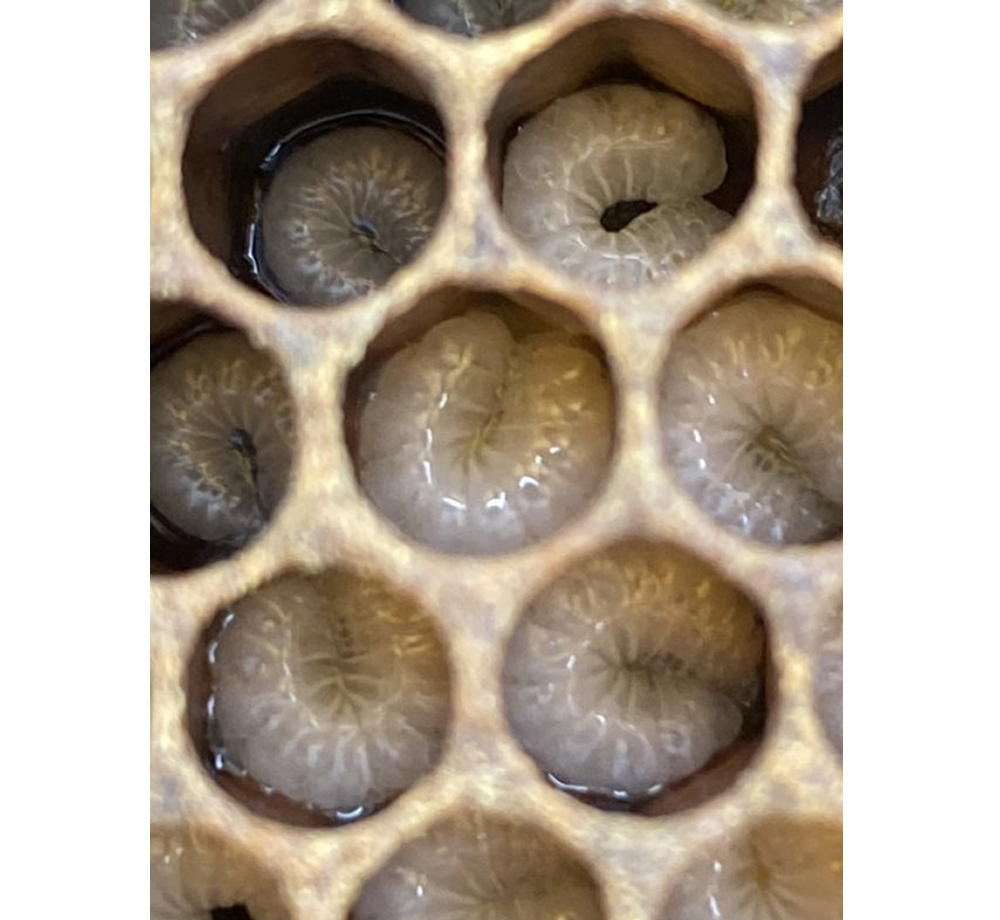
Kills mites under the brood cap
FAQ
about the product

NOD Apiary Products


